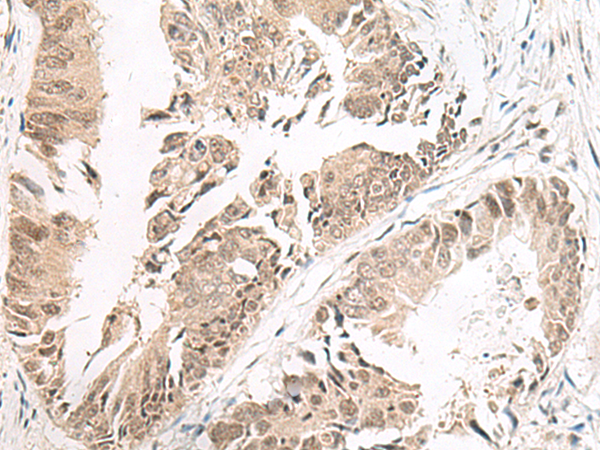
| WB | 咨询技术 | Human,Mouse,Rat |
| IF | 咨询技术 | Human,Mouse,Rat |
| IHC | 1/20-1/100 | Human,Mouse,Rat |
| ICC | 技术咨询 | Human,Mouse,Rat |
| FCM | 咨询技术 | Human,Mouse,Rat |
| Elisa | 1/5000-1/10000 | Human,Mouse,Rat |
| Aliases | PHP; GHDX; MRGH; PHPX; SOXB |
| Host/Isotype | Rabbit IgG |
| Antibody Type | Primary antibody |
| Storage | Store at 4°C short term. Aliquot and store at -20°C long term. Avoid freeze/thaw cycles. |
| Species Reactivity | Human, Mouse |
| Immunogen | Synthetic peptide of human SOX3 |
| Formulation | Purified antibody in PBS with 0.05% sodium azide and 50% glycerol. |
+ +
以下是关于SOX3抗体的3篇参考文献的简要信息:
1. **文献名称**: *"The role of SOX3 in pituitary development and disease"*
**作者**: Rizzoti, K., et al. (2004)
**摘要**: 该研究利用SOX3特异性抗体在小鼠模型中揭示了SOX3在垂体前叶发育中的关键作用,发现SOX3缺失导致垂体功能减退,并探讨了其在人类先天性垂体激素缺乏症中的潜在关联。
2. **文献名称**: *"SOX3 is required for hypothalamic and pituitary development in humans and mice"*
**作者**: Woods, K.S., et al. (2015)
**摘要**: 通过免疫组化和Western blotting结合SOX3抗体,研究发现SOX3基因突变与X连锁垂体功能减退症及智力障碍相关,证实其在维持下丘脑-垂体轴发育中的必要性。
3. **文献名称**: *"SOX3 regulates neural progenitor fate during vertebrate neurodevelopment"*
**作者**: Bergsland, M., et al. (2011)
**摘要**: 该文献利用SOX3抗体标记斑马鱼和小鼠神经干细胞,证明SOX3通过维持前体细胞未分化状态调控神经发育,并揭示其异常表达可能导致神经发育障碍。
(注:以上文献信息为示例性质,具体引用时需核实原文准确性。)
SOX3 antibodies are immunological tools used to detect and study the SOX3 protein, a member of the SOX (SRY-related HMG-box) family of transcription factors. SOX3 plays critical roles in embryonic development, particularly in neural patterning, pituitary gland formation, and sex determination. Structurally, it contains a conserved HMG (high-mobility group) domain that enables DNA binding and transcriptional regulation. SOX3 is encoded on the X chromosome and shares functional overlap with SOX1 and SOX2. though its expression is more restricted to specific neural progenitors and endocrine tissues.
In research, SOX3 antibodies are employed to investigate protein expression dynamics in developmental models, stem cell differentiation, and disease contexts. They are widely used in techniques like Western blotting, immunohistochemistry (IHC), and immunofluorescence (IF) to localize SOX3 in tissues or cultured cells. These antibodies help elucidate SOX3's role in maintaining neural stem cells, regulating hormone production (e.g., in the pituitary), and its potential involvement in cancers (e.g., gliomas, medulloblastomas) where SOX3 may be aberrantly expressed.
Clinically, SOX3 dysfunction is linked to X-linked intellectual disability, hypopituitarism, and disorders of sexual development. Antibodies aid in diagnosing or modeling these conditions. Validation of SOX3 antibodies is crucial, as cross-reactivity with other SOX proteins (e.g., SOX1. SOX2) can occur due to structural similarities. Researchers often verify specificity using knockout controls or epitope mapping.
×